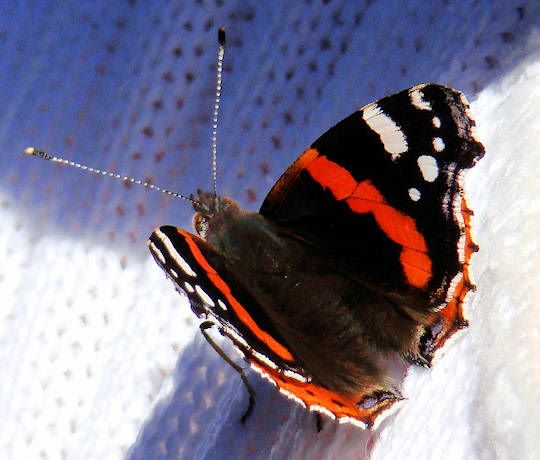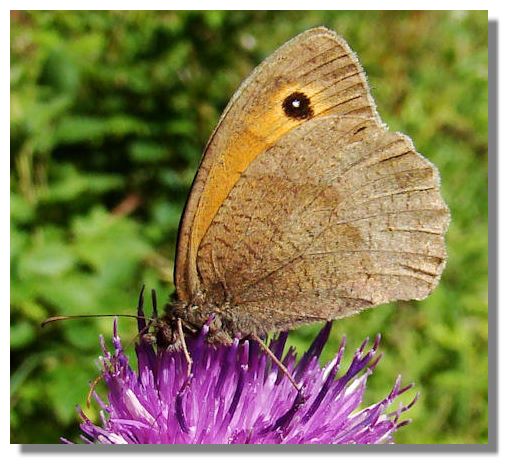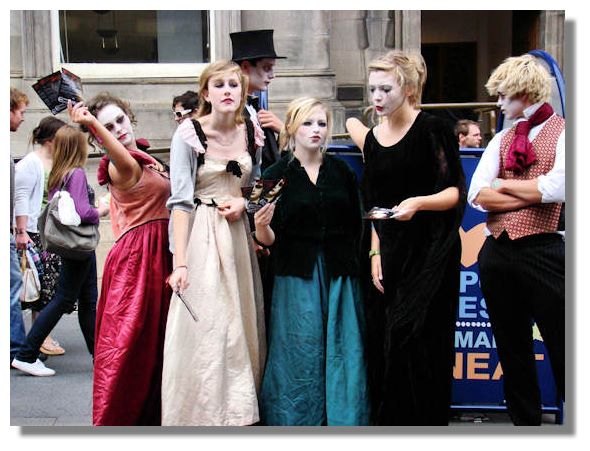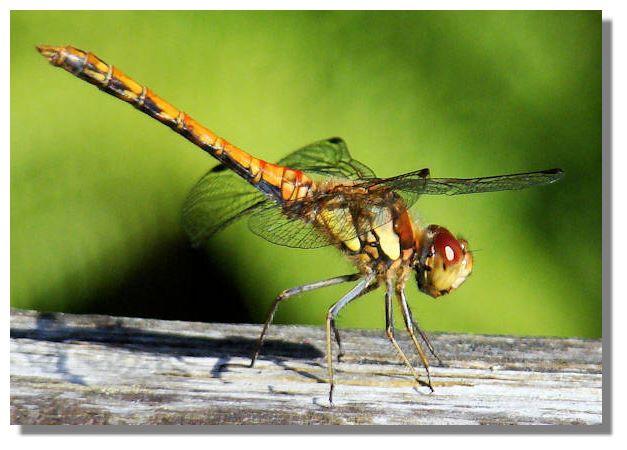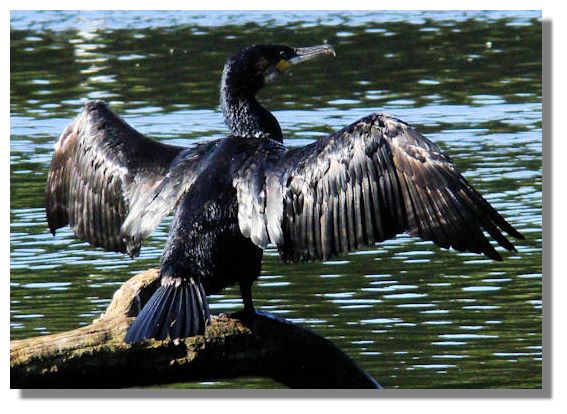The Rampant Scotland Newsletter includes a number of photographs which illustrate the weather and the seasons, plus the flora and fauna of the current week around Scotland. This separate "colour supplement" displays some more pictures, in a larger format. Here is this week's crop of Scottish views!
This has been a very poor year for seeing butterflies, so it was a great relief to find quite a number of Red Admirals enjoying the nectar on some buddleja trees at Culzean Castle Country Park (yes, another visit!). Not for the first time, some of the butterflies mistook my wife for an attractive flower and landed on her sweater - as in this picture. At one point she had two butterflies basking in the sunshine on her back at the same time.
Meadow Brown butterflies are not as brightly coloured as Red Admirals. But in close up, the subtle shades of brown and orange are most attractive. The one here is feeding on a Knapweed flower, which looks a bit like a thistle - but without the sharp spikes.
The Edinburgh International Festival and the Fringe Festival dominate the Capital during August. St Giles Cathedral in High Street forms an uncomfortable backdrop to the excesses swirling below!
Many of the Edinburgh Fringe performers drum up business for their shows by appearing in the Royal Mile and encouraging passers-by to go along and see them. With over 2,000 shows in the Fringe, standing out from the crowd can be quite a task!
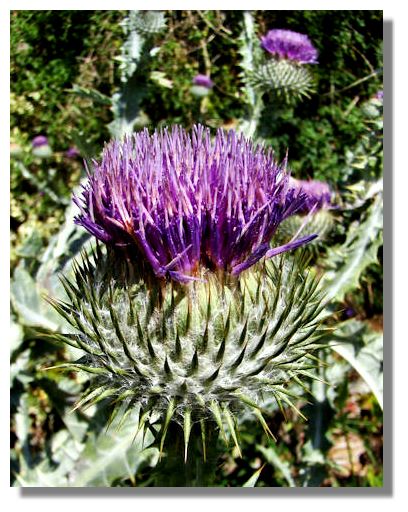
The giant thistle "Onopordum" can grow to eight feet high and creates a dramatic show at the back of a large border, with its silver leaves and large purple flowers. Because of its size, it is not often seen in suburban gardens but is popular in places like the walled garden in Culzean Castle Country Park (as here) or Princes Street Gardens below Edinburgh Castle.
This fiercesome dragonfly is a "Common Darter" (Sympetrum striolatum), one of the medium size varieties of this insect. It is one of the most common dragonflies in Europe, occurring in a wide variety of water bodies, though with a preference for breeding in still water such as ponds and lochs. Adults are on the wing from June until November. They will often repeatedly return to a sunny spot and chase competitors away, including larger dragonflies.
Cormorants can often be seen with their wings spread like this, basking in the sunshine to dry their wings after diving for fish. Unlike many other diving birds, their feathers are not waterproofed. This may help them dive quickly, since their feathers do not retain air bubbles. The name "Cormorant" is a contraction derived from Latin corvus marinus, "sea raven".If you want to look back at earlier editions of this Colour Supplement, there is an Index Page
